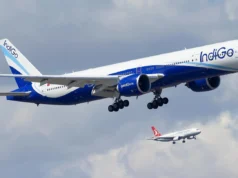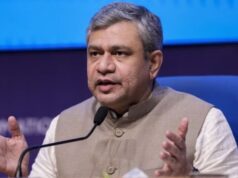Many Indian professionals and recent graduates have long aspired to live and work in the United States. However, the recent revelation of a $100,000 charge associated with the H-1B visa program shocked both foreign workers and businesses.
In a clarification published on October 20, the U.S. Citizenship and Immigration Services (USCIS) outlines who is required to pay the charge, who is exempt, and how the payment procedure would operate. Especially for current H-1B visa holders who are currently residing and working in the United States, the update has brought much-needed clarity and relief.
The H-1B Visa: What Is It?
In specialized professions that need particular skills, such as technology, engineering, finance, healthcare, and research, qualified foreign individuals can work in the United States with an H-1B visa.
It also includes certain doctors, fashion models, and specialists involved in U.S. Department of Defense projects. Candidates must have at least a bachelor’s degree or comparable work experience in order to be eligible.
The $100,000 Fee: Discussion and Perplexity
In an effort to reduce reliance on foreign labor, the Trump administration announced in September 2025 a new $100,000 cost for H-1B applicants.
However, the rule’s ambiguity—specifically, who would be responsible for paying and when—left both businesses and visa applicants unsure of how it would actually work.
Clarification On The $100,000 Fee Rules
Not everyone will be required to pay, according to the most recent USCIS instructions. Those who are already in the country and are merely changing their visa status—for instance, students switching from an F-1 visa to an H-1B—are exempt from the $100,000 charge.
Additionally, it won’t apply to:
As of September 21, 2025, current H-1B holders who were in the United States
Visa holders going overseas while their current visa is still valid
Those whose applications were submitted prior to September 21, 2025
H-1B employees acting in the public interest and not endangering the security or well-being of the United States
This indicates that the rule primarily targets new foreign applicants rather than those who are already covered by the current visa system.
Who Must Pay The $100,000 Charge?
When submitting an H-1B petition, employers who intend to hire new foreign workers from overseas must pay the $100,000 fee.
Crucially, the law states that employers, not visa applicants, are liable for paying this expense.
The fee is mainly applicable to:
Employees who are now abroad or who have to depart the nation before their petition is considered
What time and how should the $100,000 payment be made?
Where To Pay The Fee
Employers are required to pay the charge electronically through pay.gov using the form labeled “H-1B VISA PAYMENT TO REMOVE RESTRICTION,” according to the immigration website Boundless.
When to Make the Fee Payment
Prior to submitting the H-1B petition, the payment must be made. When filing, employers are required to include proof of payment or documentation of exemption.
USCIS will reject petitions without proof of exemption or payment confirmation.
Documents To Attach After Payment
One of the following must be included by employers:
A copy of the pay.gov payment confirmation, or An approved exemption letter from the Department of Homeland Security
Guidelines for Refunding the $100,000 Charge
USCIS has verified that the $100,000 will be fully refunded in the event that a petition is denied. In order to avoid delays in processing reimbursements, employers have been encouraged to thoroughly verify bank details.
The Implications Of The New Fee For American Companies
The financial impact might be substantial for many American businesses, particularly those in the engineering, technology, and research industries.
Employing ten H-1B employees annually could result in an extra $1 million in expenses for the business. It is anticipated that this will force HR departments to reconsider hiring practices, update pay budgets, and make sure that the new immigration laws are followed.
Industry experts have cautioned that the shift would deter companies from recruiting people from around the world, which might limit workplace diversity and impede innovation.
Impact on India’s Skilled Workers
The regulation may make the H-1B path more competitive and restrictive for Indian professionals, especially new graduates and those just starting their careers.
Employers may prioritize senior-level or highly specialized professions for sponsorship due to the high expense, which would limit options for younger people who want to begin their careers in the United States.
The new cost may nonetheless change the way international talent pipelines between India and the United States function, even though USCIS’s comments have cleared up some confusion.
1. What is the new rule?
A $100,000 fee has been introduced for H-1B visa petitions filed from outside the U.S.
2. Who pays the fee?
The employer – not the visa applicant – must pay the amount.
3. Who is exempt?
Existing visa holders in the U.S., students shifting from F-1 to H-1B, and those with petitions filed before September 21, 2025.
4. How is payment made?
Through pay.gov using the form titled “H-1B VISA PAYMENT TO REMOVE RESTRICTION”.
5. Will the fee be refunded if the petition is denied?
Yes, the full amount will be refunded.
6. What does this mean for Indian professionals?
It could make the H-1B pathway tougher for young professionals and graduates, as employers may now reserve sponsorships for highly skilled or senior roles.







